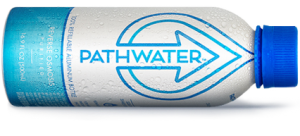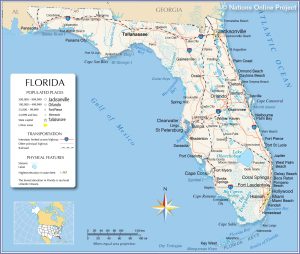Interview With Shadi Bakour and Gulshan Kumar of PATHWater

This past Earth Day, I caught up with Shadi Bakour and Gulshan Kumar of refillable water bottle seller PATHWater as they were manning a booth at a local festival in California for this interview.
Heidi: I’m here with Shadi Bakour and Gulshan Kumar of PATHWater today. How you doing?
Shadi Bakour: Doing great.
Gulshan Kumar: Doing wonderful. It’s a beautiful day, Earth Day.
Heidi: Yeah, loving it. So, first question I got is, what is the average amount of water intake you should be drinking and how does the lack of hydration affect the human body?
Shadi: Sorry, it’s kind of like cutting out. So, basically, it’s recommended by doctors that we drink 80 to 100 ounces of water minimum every single day. This is something that’s really important to us. We see in a lot of places that don’t have access to just a quick, easy sort of water, like a tap or a refilling station. We’re trying to solve those problems by offering the convenience and the sustainability of a bottled water brand that cares more about the planet than any other brand that’s been out there.
Gulshan: Right. And just to go on what Shadi was saying, 80 to 100 ounces, for some people that seems like a lot of water, but what tap water does, it makes that experience much better for the consumer, so you actually end up drinking more water.
So, we found out that our consumers, when they actually do buy our bottles and refill, they are meeting that water intake requirement.
Heidi: Awesome. What are some ways that people can reduce their carbon footprint and cut back on waste?
Gulshan: Right. The easiest way to reduce your carbon footprint is to use reusables. Kind of integrate reusable products all in your lifestyle. So, what we say is, if you can’t reuse it, refuse it. Right? And that’s a great way to kind of automatically minimize your carbon footprint.
Shadi: Absolutely. One thing that we say as a company, is that sustainability is a lifestyle. It goes through literally everything that you do on a daily basis. If you go grab a cup of coffee, you might not realize that that little plastic lid on top will last for 700 years. You’re using it for a couple hours for the day and then when you recycle it, that piece of plastic is going to exist for another 700 years.
It’s a lot about education. It’s a lot about just the way that we live our lives and we’re here to promote that type of lifestyle.
Heidi: That’s a long time for plastic to decompose.
Shadi: It’s a really long time. It’s really, really sad. Every single piece of plastic that’s ever been created still exists today.
Heidi: What is BPA?
Gulshan: BPA is actually a chemical compound that they use to soften the plastic water bottles. What happens is, usually a lot of people, they leave their water bottles exposed in their car, outside, and when the heat hits the plastic, that BPA actually absorbs into the water.
So, I don’t know if you might have even tasted this when you’ve left your water bottle in the car for a while and then taken a sip of it, it kind of tastes a little bit weird. That is the chemical kind of leeching into the water. So, BPA has become—it’s kind of known for causing certain cancers in men and women.
Shadi: So our products are completely BPA-free and that’s something that’s really important to us. Even any adult that’s having a kid, this is one of the main things that they want to make sure, is that their kid is not drinking from or using any utensils or products that have BPA in them.
Gulshan: And actually, there was a study a couple months ago over in Europe about they did a test of over 100 students and 86% of the students tested positive for BPA. So, this is something that the numbers are increasing and there’s more and more data coming out behind this.
Shadi: You have to be really careful about the items that we’re consuming on a daily basis and be aware.
Heidi: What’s the recycle rate for most commonly-used packaging materials, like plastic and aluminum?
Gulshan: Well, plastic has a 30% recycle rate, which is very, very low, right? Less than half. And aluminum has a 70% recycle rate. Aluminum is the most regarded or valuable material in a recycling bin. It’s infinitely recyclable. You can keep on recycling it, it doesn’t lose its value. But plastic, after you recycle it about two times, you can’t recycle it anymore, so it downgrades.
Shadi: That process is called downcycling. People just know that aluminum is more recyclable, easier to recycle, uses less energy than plastic, and this is just something that somehow people just already inherently know, that when they see an aluminum bottle, to throw it in the recycling bin. Sometimes, we’re just really sad to see how much plastic doesn’t end up in the recycling bin. But even so, the problem is still single use. Recycling is a huge part of it, but we want to make sure—we’re really pushing people to change how they drink water on a daily basis and that’s by reusing.
Heidi: What can you tell me about the Great Pacific Garbage Patch?
Gulshan: So, the Great Pacific Garbage Patch is actually a patch of plastic about the size of Texas. The way it gets there is there’s something called gyre. A gyre is the way the ocean current circulates, so there’s five major gyres on our planet and they actually all rotate all the plastic pollution in one concentrated area and that’s what’s considered the Great Pacific Garbage Patch. And like I said, it’s the size of Texas, so if you can imagine that, an ocean full of plastic, it’s really kind of sad to see.
Shadi: I mean, we’re here in Santa Monica, California right now and like you go out onto the beach and you can literally see the difference in a matter of a few minutes—or I’m sorry, a few years, of how much plastic has built up onto the beaches.
So us, along with a lot of other organizations, like Plastic Tides, Save the Waves, Surfrider Foundation, we’re all pushing to do things to reduce plastic waste, like beach cleanups and stuff like that.
Heidi: That’s pretty cool. Is it true then that like by 2050 there will be more plastic than fish in the world’s oceans?
Gulshan: Yes. Unfortunately, that’s 100% true. By 2050, there will be more plastic than fish in the oceans, by weight.
Shadi: Really, like if you think about it, this is a problem that we have to deal with now, or maybe even like five years ago, because every single day, plastics are breaking down in the ocean to little tiny pieces and the fish will eat those little pieces of plastic, and then bigger fish will eat them, bigger fish will eat them, and they end up in our food, in our entire ecosystem, in our soil. This is a huge trickle-down effect that will affect our entire lives and all the generations to come.
Heidi: How many plastic bottles did the average American use last year?
Gulshan: The average American uses about 167 plastic bottles a year. If you can imagine, out of 167, only 30% gets recycled of that. That’s an alarming number. Path Water making reusable bottles, just think about how many plastic bottles you’re actually saving from oceans and landfills, if you end up refilling with tap water. It’s a lot.
Heidi: That’s all the questions I have. Anything you’d like to add?
Gulshan: Sure, I’ll add something. I don’t know if you’ve seen the bottle, but here it is. We’re here to really end and ban single-use plastic. That’s what we care about, that’s the mission of our company. And I just wanted to say that we appreciate you taking the time out to talk with us and please watch out for Path Water because we are disrupting the bottled water industry and we will be everywhere very soon.
Shadi: Yeah. That’s about it.
Heidi: Okay, thanks.








